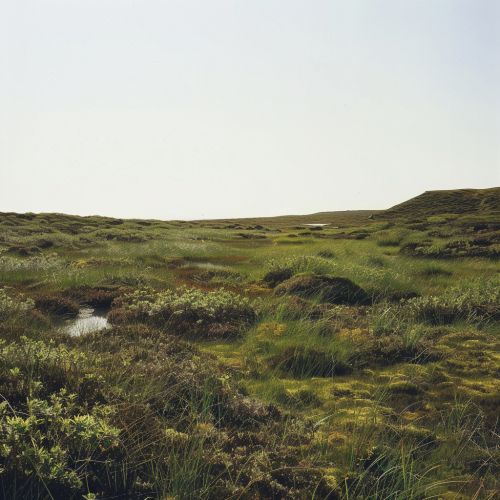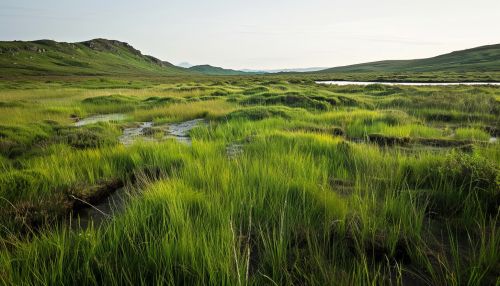Peat Bog
Overview
A peat bog is a type of wetland landscape characterized by the accumulation of decomposed plant material, known as peat. This unique ecosystem is primarily found in cool temperate and boreal regions of the Northern Hemisphere, including parts of North America, Europe, and Asia. Peat bogs play a significant role in global carbon storage, biodiversity, and human history.


Formation
The formation of a peat bog begins with the development of a lake or pond in a cool, wet climate. Over time, plants such as mosses, particularly sphagnum moss, begin to grow along the water's edge. As these plants die, they sink to the bottom of the lake, where the water's acidity and low oxygen levels slow the rate of decomposition. This leads to the accumulation of peat, which gradually fills in the lake or pond. Once the water body is completely filled, a peat bog is formed.
Characteristics
Peat bogs are characterized by their high water table, acidic conditions, low nutrient levels, and the dominance of sphagnum moss and other peat-forming plants. The water in a peat bog is typically acidic due to the release of organic acids from decomposing plant material. This acidity, combined with low oxygen levels, creates a unique environment that supports a specialized community of plants and animals.
Flora and Fauna
The flora of peat bogs is dominated by sphagnum moss, which can hold large amounts of water and creates the acidic conditions necessary for peat formation. Other common plants include heaths, sedges, and carnivorous plants, which have adapted to the nutrient-poor conditions by trapping and digesting insects.
The fauna of peat bogs is equally specialized. Many species of birds, such as the bog turtle and the red grouse, are adapted to the unique conditions of this habitat. In addition, a variety of insects, amphibians, and mammals, including the European otter and the pine marten, can be found in peat bogs.
Role in Carbon Storage
Peat bogs play a crucial role in global carbon storage. The slow decomposition of plant material in peat bogs results in the accumulation of large amounts of carbon, which is stored in the peat. This makes peat bogs one of the most significant terrestrial carbon sinks, storing more carbon per unit area than any other ecosystem, including forests.
Human Use and Impact
Throughout history, humans have used peat bogs for a variety of purposes. Peat has been harvested for fuel, and in some cases, for the production of whiskey. However, these activities have led to the degradation and loss of many peat bogs, with significant implications for biodiversity and carbon storage.
In recent years, there has been growing recognition of the importance of peat bogs and efforts are being made to conserve and restore these unique ecosystems.
